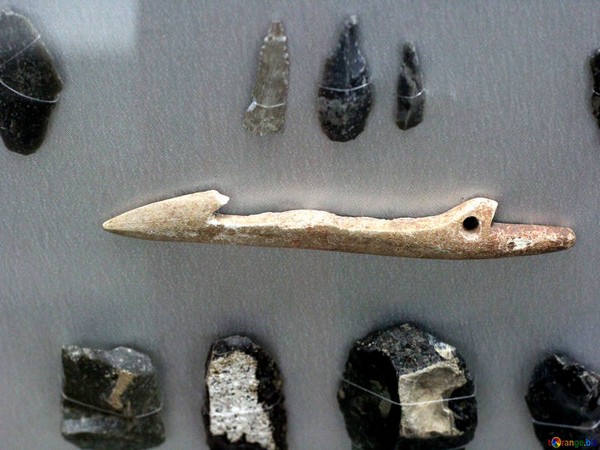Changes in Stone tools used by Mesolithic hunter-gatherers linked to climate change
The gradual change in stone tools during ancient times may show how Mesolithic hunter-gatherers responded to changing climate

- Country:
- United States
The gradual change in stone tools during ancient times may show how Mesolithic hunter-gatherers responded to changing climate According to the study, the development of new hunting projectiles by European hunter-gatherers during the Mesolithic may have been linked to territoriality in a rapidly-changing climate.
As a result of warming occurring at a rate of ca. 1.5 to 2degC per century, hunter-gatherers in Europe during the Mesolithic era (approximately 11,000-6,000 years ago) experienced significant environmental changes, very similar to the ones we face today: rising sea levels, increased drought, plant and animal migrations, and wildfires. Here, the team of researchers examined microliths small stone arrowheads/barbs used in hunting, to see how their design and usage by Mesolithic hunter-gatherers shifted in conjunction with climatic and environmental changes.
Findings were published in the journal of PLOS ONE. Building on archaeological research from the last two decades, the researchers used Bayesian modelling to reveal potential correlations between 228 radiocarbon dates specific to Mesolithic sites along the southern North Sea basin and the different types and shapes of microliths (triangles, crescents, leaf-shaped, and mistletoe-shaped microliths, trapezes, etc.) found at these sites.
The new model showed that variation in microlith shapes is much more complex than previously believed, with frequent co-existence between shapes. Crombe hypothesizes in this study that these different shapes of stone microliths were mainly developed as a means to differentiate between different groups living along the North Sea basin (previous research has suggested there were two different, geographically-distinct cultures in this region). As sea levels rose and former occupants of the North Sea basin were forced to new areas, increased resource competition and stress might have increased territoriality, including the use of such symbols of a group membership.
Developments in microlith shape also appeared to be linked to short (1 to 2 centuries) but abrupt climatic events (which themselves would have been tied to increasing environmental and demographic change). triangle-shaped microliths were introduced after an abrupt cooling event in the Early Mesolithic associated with erosion and wildfires; a similar climate event 1,000 years later coincided with the appearance of small backed bladelets and invasively retouched microliths, and an even newer trapeze-shaped arrowhead replaced these older microliths at the same time as a third cooling and drought-causing event another 1,000 years later.
"In response to rapid climate warming some 11,500 years ago, hunter-gatherers along the southern North Sea (NW Europe) faced similar environmental changes as we encounter today, such as rapid sea-level rise, increased drought and wildfires, and migration of people, plants and animals. By studying the hunting equipment, this paper investigates how these hunter-gatherers coped with these changes," Philippe Crombe, lead author of the study suggested. (ANI)
(This story has not been edited by Devdiscourse staff and is auto-generated from a syndicated feed.)
ALSO READ
New Dawn for Northeast: Mega Fertilizer Plant in Assam to Revolutionize Regional Growth
Mizoram's Strategic Shift: Privatization of Hydel Power Plants Sparks Debate
PM lays foundation stone of Rs 10,601-crore fertiliser plant in Assam's Dibrugarh district.
Reviving Fertiliser Legacy: PM Modi Lays Foundation for Mega Plant in Assam
Gujarat CM launches Ahmedabad metro train coaches at Titagarh plant










